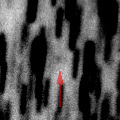
|
Brightening very rapidly. Now it is very bright as 10.9 mag (Dec. 6, Katsumi Yoshimoto). It will approach to the earth down to 0.08 a.u. to the earth in mid February, and it is expected to be observable at 6 mag in good condition. It keeps very low in the evening sky for a while. It will be unobservable temporarily in January. Then it keeps observable in good condition after mid February.
Date(TT) R.A. (2000) Decl. Delta r Elong. m1 Best Time(A, h)
Dec. 10 19 50.77 -23 37.3 1.135 0.690 37 10.8 20:52 ( 68, 10)
Dec. 17 20 14.70 -22 25.2 1.007 0.611 35 9.3 20:57 ( 68, 7)
|
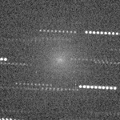
|
Brightening rapidly. Now it is very bright as 11.2 mag (Dec. 6, Katsumi Yoshimoto). It will approach to the sun down to 0.3 a.u. on Jan. 14. It may brighten up to 7 mag. In the Northern Hemisphere, it keeps observable in good condition in the morning sky until early January while the comet will be brightening. It is not observable at all in the Southern Hemisphere.
Date(TT) R.A. (2000) Decl. Delta r Elong. m1 Best Time(A, h)
Dec. 10 15 5.01 37 2.8 0.712 0.959 66 11.1 2:53 (243,-30)
Dec. 17 16 2.83 25 54.2 0.719 0.815 54 10.4 2:54 (258,-31)
|
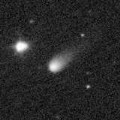
|
Now it is 12.0 mag (Dec. 5, Maik Meyer). It is expected to brighten up to 7 mag in 2017 summer. In the Northern Hemisphere, it keeps observable in good condition until the highlight while the comet will be brightening. In the Southern Hemisphere, it is not observable until early 2017.
Date(TT) R.A. (2000) Decl. Delta r Elong. m1 Best Time(A, h)
Dec. 10 13 45.36 44 23.2 2.817 2.847 81 11.5 2:53 (229,-20)
Dec. 17 14 0.69 44 12.6 2.706 2.782 84 11.3 2:54 (228,-18)
|
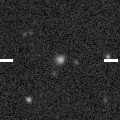
|
Appearing in the morning sky. Now it is 14.0 mag (Nov. 22, Ken-ichi Kadota). It is expected to brighten up to 7 mag in 2017 spring. But it locates somewhat low at the high light.
Date(TT) R.A. (2000) Decl. Delta r Elong. m1 Best Time(A, h)
Dec. 10 14 21.99 -16 52.8 3.167 2.487 39 13.0 2:53 (286, 7)
Dec. 17 14 35.46 -17 51.4 3.026 2.405 43 12.7 2:54 (285, 10)
|
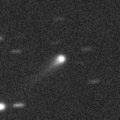
|
It brightened very rapidly and became brighter than expected. Now it is very bright as 12.5 mag (Nov. 1, Chris Wyatt). It is not observable already in the Southern Hemisphere. It will be unobservable soon also in the Northern Hemisphere.
Date(TT) R.A. (2000) Decl. Delta r Elong. m1 Best Time(A, h)
Dec. 10 18 51.44 -15 22.9 2.886 2.041 25 13.5 20:52 ( 66, -6)
Dec. 17 19 8.48 -14 42.4 2.926 2.054 22 13.8 20:57 ( 64,-10)
|

|
It was observed as bright as 12-13 mag from late October to early November. Now it is fainter than 14.3 mag (Dec. 1, Chris Wyatt). It will be unobservable in mid December.
Date(TT) R.A. (2000) Decl. Delta r Elong. m1 Best Time(A, h)
Dec. 10 19 52.48 -22 30.8 6.630 5.882 37 13.9 20:52 ( 69, 9)
Dec. 17 19 57.88 -22 11.0 6.692 5.880 31 13.9 20:57 ( 66, 4)
|
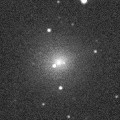
|
It brightened up to 11-12 mag in autumn. Now it is fading. But it is bright as 13.3 mag still now (Dec. 2, Seiichi Yoshida). It is getting higher gradually after this also in the Southern Hemisphere.
Date(TT) R.A. (2000) Decl. Delta r Elong. m1 Best Time(A, h)
Dec. 10 12 45.27 -8 50.9 2.005 1.811 64 14.0 2:53 (265, 22)
Dec. 17 12 57.36 -10 12.7 1.981 1.856 68 14.2 2:54 (264, 26)
|

|
It brightened up to 8-9 mag from last winter to spring. Now it is fading. It has already faded down to 16.4 mag (Dec. 2, Ken-ichi Kadota).
Date(TT) R.A. (2000) Decl. Delta r Elong. m1 Best Time(A, h)
Dec. 10 13 10.60 -8 43.8 4.884 4.451 58 14.0 2:53 (269, 17)
Dec. 17 13 12.72 -9 36.7 4.838 4.509 64 14.1 2:54 (266, 23)
|
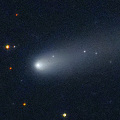
|
It brightened up to 11-12 mag from summer to autumn. Now it is fading. But it is bright as 13.3 mag still now (Dec. 2, Seiichi Yoshida).
Date(TT) R.A. (2000) Decl. Delta r Elong. m1 Best Time(A, h)
Dec. 10 11 53.25 -16 26.9 1.836 1.822 73 14.3 2:53 (265, 37)
Dec. 17 12 2.59 -18 15.0 1.811 1.868 77 14.4 2:54 (264, 42)
|
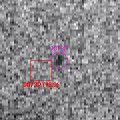
|
Now it is 16.5 mag (Nov. 29, Michael Jager). It will brighten up to 12 mag from winter to spring. In the Northern Hemisphere, it keeps observable while the comet is brightening gradually. But it will be unobservable in late February. In the Southern Hemisphere, it keeps unobservable until December. But it keeps observable for a long time after late December.
Date(TT) R.A. (2000) Decl. Delta r Elong. m1 Best Time(A, h)
Dec. 10 13 59.33 -3 27.5 2.062 1.610 49 14.7 2:53 (271, 4)
Dec. 17 14 19.97 -5 26.9 1.959 1.546 51 14.3 2:54 (272, 7)
|
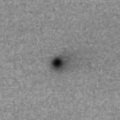
|
Now it is 15.2 mag (Nov. 17, Ken-ichi Kadota). It will brighten up to 14 mag from winter to spring in 2017, and it will be observable in excellent condition in the Northern Hemisphere. It keeps low in the Southern Hemisphere.
Date(TT) R.A. (2000) Decl. Delta r Elong. m1 Best Time(A, h)
Dec. 10 11 24.12 24 44.8 2.110 2.421 96 14.4 2:53 (225, 14)
Dec. 17 11 33.46 24 55.4 2.035 2.422 100 14.3 2:54 (221, 17)
|

|
Now it is 14.2 mag (Nov. 22, Chris Wyatt). Distant object, but it keeps observable at 13-14 mag for a long time from 2015 to 2016.
Date(TT) R.A. (2000) Decl. Delta r Elong. m1 Best Time(A, h)
Dec. 10 0 35.60 -5 19.3 4.701 5.088 107 14.4 20:52 (138, 53)
Dec. 17 0 37.44 -5 11.9 4.819 5.102 101 14.5 20:57 (129, 48)
|

|
It brightened up to 11 mag from spring to summer. Now it is not observable. It will be observable at 16 mag again in 2017 spring.
Date(TT) R.A. (2000) Decl. Delta r Elong. m1 Best Time(A, h)
Dec. 10 16 43.60 -20 13.8 3.067 2.091 6 14.6 2:53 (310,-16)
Dec. 17 16 59.97 -20 42.0 3.095 2.130 9 14.8 2:54 (308,-14)
|
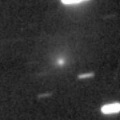
|
Now it is bright as 15.3 mag (Nov. 22, Thomas Lehmann). It will be observable at 11 mag for a long time from 2017 to 2018. Now it is observable in excellent condition in the Southern Hemisphere. But it keeps low for a while in the Northern Hemisphere.
Date(TT) R.A. (2000) Decl. Delta r Elong. m1 Best Time(A, h)
Dec. 10 3 1.99 -39 46.6 5.189 5.614 110 15.1 21:43 ( 0, 85)
Dec. 17 2 57.73 -38 56.8 5.191 5.562 107 15.0 21:11 ( 0, 86)
|

|
Appearing in the morning sky in the Northern Hemisphere. Now it is fading. But it must be bright as 15 mag still now.
Date(TT) R.A. (2000) Decl. Delta r Elong. m1 Best Time(A, h)
Dec. 10 14 56.80 -18 32.2 2.808 2.028 31 15.3 2:53 (292, 1)
Dec. 17 15 11.93 -19 11.9 2.830 2.095 34 15.5 2:54 (291, 4)
|
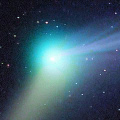
|
It brightened up to 6 mag from last autumn to last winter. Now it is fading. It has already faded down to 15.2 mag (Nov. 2, Yuji Ohshima). It is observable in good condition in the Northern Hemisphere. It is not observable after this in the Southern Hemisphere.
Date(TT) R.A. (2000) Decl. Delta r Elong. m1 Best Time(A, h)
Dec. 10 3 42.60 55 7.8 4.350 5.179 144 15.3 22:24 (180, 0)
Dec. 17 3 31.14 54 11.1 4.446 5.248 140 15.4 21:45 (180, 1)
|
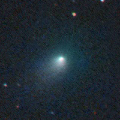
|
Now it is 14.4 mag (Oct. 22, Thomas Lehmann). It will be unobservable in December.
Date(TT) R.A. (2000) Decl. Delta r Elong. m1 Best Time(A, h)
Dec. 10 20 5.10 -27 46.3 2.616 1.966 40 15.4 20:52 ( 66, 15)
Dec. 17 20 23.68 -26 52.7 2.697 2.004 37 15.7 20:57 ( 65, 12)
|
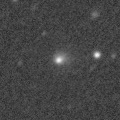
|
Now it is 16.0 mag (Nov. 3, Kunihiro Shima). It will brighten up to 15 mag in winter. But it will be getting lower gradually after this.
Date(TT) R.A. (2000) Decl. Delta r Elong. m1 Best Time(A, h)
Dec. 10 22 35.44 -1 24.4 1.760 1.891 81 15.5 20:52 (112, 30)
Dec. 17 22 46.33 0 3.6 1.800 1.862 77 15.4 20:57 (109, 25)
|
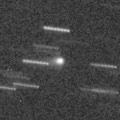
|
Now it is 15.0 mag (Nov. 2, Kunihiro Shima). It will brighten up to 12-13 mag and will be observable in good condition in 2017 summer. In 2016, it keeps observable until winter when it will brighten up to 15.5 mag. It locates somewhat low in the Southern Hemisphere.
Date(TT) R.A. (2000) Decl. Delta r Elong. m1 Best Time(A, h)
Dec. 10 0 40.58 20 59.0 3.223 3.792 118 15.5 20:52 (156, 30)
Dec. 17 0 32.15 19 38.4 3.303 3.745 109 15.5 20:57 (145, 27)
|
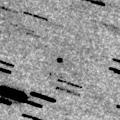
|
Now it is 16.5 mag (Nov. 28, Michael Jager). It will pass the perihelion on Mar. 10, 2017. In the Northern Hemisphere, it keeps observable in the evening sky until late February while the comet will be brightening up to 8.5 mag. In the Southern Hemisphere, it will appear in the morning sky in late March at 8 mag, then it keeps observable while the comet will be fading.
Date(TT) R.A. (2000) Decl. Delta r Elong. m1 Best Time(A, h)
Dec. 10 22 52.66 4 19.3 1.398 1.683 88 16.2 20:52 (120, 29)
Dec. 17 22 53.90 4 3.6 1.413 1.595 81 15.6 20:57 (114, 24)
|
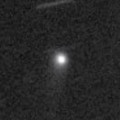
|
Now it is 15.4 mag (Nov. 19, Ken-ichi Kadota). It will brighten up to 14 mag from summer to winter in 2017. Then it will be observable in excellent condition in the Northern Hemisphere. In the Southern Hemisphere, it is hardly observable around the highlight.
Date(TT) R.A. (2000) Decl. Delta r Elong. m1 Best Time(A, h)
Dec. 10 22 48.04 -8 42.6 4.164 4.142 81 15.8 20:52 (107, 37)
Dec. 17 22 48.44 -7 37.0 4.239 4.103 75 15.8 20:57 (103, 30)
|

|
It has been lost since its discovery in 1978. In 2016, it is expected to return in excellent condition from autumn to winter.
Date(TT) R.A. (2000) Decl. Delta r Elong. m1 Best Time(A, h)
Dec. 10 23 30.51 -7 9.9 0.859 1.332 92 15.8 20:52 (118, 44)
Dec. 17 23 53.80 -3 49.9 0.903 1.356 91 16.1 20:57 (119, 40)
|
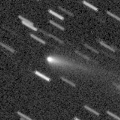
|
Now it is 15.8 mag (Nov. 23, Katsumi Yoshimoto). It will be observable at 15-16 mag in good condition from autumn to winter. It locates somewhat low in the Southern Hemisphere.
Date(TT) R.A. (2000) Decl. Delta r Elong. m1 Best Time(A, h)
Dec. 10 4 14.90 34 0.7 1.780 2.739 163 15.8 22:56 (180, 21)
Dec. 17 4 10.31 33 38.6 1.823 2.760 157 15.9 22:24 (180, 21)
|
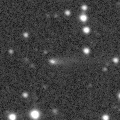
|
Now it is 17.0 mag (Nov. 5, Kunihiro Shima). It will be observable at 16-17 mag in good condition from autumn to winter. It locates low in the Southern Hemisphere.
Date(TT) R.A. (2000) Decl. Delta r Elong. m1 Best Time(A, h)
Dec. 10 7 26.42 25 36.6 2.926 3.801 148 15.9 2:12 (180, 29)
Dec. 17 7 22.65 25 55.9 2.870 3.793 156 15.9 1:40 (180, 29)
|
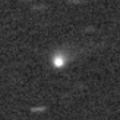
|
It will brighten up to 14 mag from spring to summer in 2017. It locates somewhat low in the Northern Hemisphere. The perihelion distance increased from 2.4 a.u. to 2.9 a.u. in this apparition. So it will not be bright as before.
Date(TT) R.A. (2000) Decl. Delta r Elong. m1 Best Time(A, h)
Dec. 10 14 44.74 -12 1.6 4.020 3.273 35 16.0 2:53 (285, 0)
Dec. 17 14 54.03 -12 49.0 3.944 3.259 40 15.9 2:54 (283, 4)
|
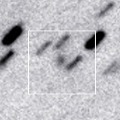
|
Now it is 15.6 mag (Nov. 19, Ken-ichi Kadota). It keeps 16-17 mag for a long time from 2016 to 2019. It keeps locating near by the equator.
Date(TT) R.A. (2000) Decl. Delta r Elong. m1 Best Time(A, h)
Dec. 10 9 22.99 1 34.1 9.224 9.678 114 16.0 2:53 (210, 50)
Dec. 17 9 22.73 1 35.6 9.118 9.672 121 16.0 2:54 (199, 52)
|
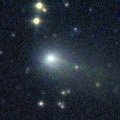
|
It brightened up to 12.5 mag in summer (Aug. 3, Marco Goiato). Now it is fading. It has already faded down to 15.2 mag (Nov. 3, Kunihiro Shima). It keeps observable in good condition for a while.
Date(TT) R.A. (2000) Decl. Delta r Elong. m1 Best Time(A, h)
Dec. 10 22 2.12 -13 56.7 3.202 3.004 69 16.2 20:52 ( 95, 31)
Dec. 17 22 11.11 -13 14.2 3.320 3.034 64 16.4 20:57 ( 92, 25)
|
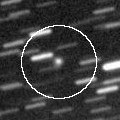
|
Now it is 16.5 mag (Nov. 4, D. Buczynski). It will brighten up to 15 mag and will be observable in good condition from autum to winter in 2017. In the Northern Hemisphere, it keeps observable in good condition for a long time while the comet will be brightening. It is not observable until 2017 summer in the Southern Hemisphere.
Date(TT) R.A. (2000) Decl. Delta r Elong. m1 Best Time(A, h)
Dec. 10 2 38.68 54 27.9 4.470 5.243 137 16.4 21:20 (180, 1)
Dec. 17 2 27.46 52 51.4 4.485 5.211 133 16.4 20:57 (178, 2)
|
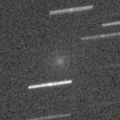
|
It approached to the Sun down to 0.45 a.u. on Oct. 10. It brightened up to 12.5-13.0 mag before the perihelion passage (Sept. 24, Michael Jager). After the perihelion passage, it was not detected, fainter than 14.0 mag on Nov. 16 (Michael Mattiazzo), fainter than 17 mag on Nov. 19 (Terry Lovejoy), fainter than 15.5 mag on Nov. 25 (Justin Tilbrook). It must have already disappeared. It will never be observable again in the Northern Hemisphere. In the Southern Hemisphere, it keeps extremely low after this. It has a very similar orbit to Comet C/1915 R1 ( Mellish ).
Date(TT) R.A. (2000) Decl. Delta r Elong. m1 Best Time(A, h)
Dec. 10 18 34.72 -45 44.2 2.154 1.375 28 16.5 20:52 ( 41, 11)
Dec. 17 19 4.37 -47 8.0 2.272 1.493 29 17.0 20:57 ( 39, 11)
|
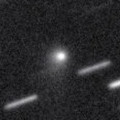
|
It brightened up to 15 mag in early 2016. Now it is fading. It has already faded down to 16.5 mag (Nov. 19, Ken-ichi Kadota). In the Northern Hemisphere, it keeps observable in good condition for a long time until 2017 autumn when the comet will be fainter than 18 mag. It will never be observable after this in the Southern Hemisphere.
Date(TT) R.A. (2000) Decl. Delta r Elong. m1 Best Time(A, h)
Dec. 10 14 43.96 65 49.9 5.963 6.093 92 16.7 2:53 (210,-35)
Dec. 17 14 53.51 65 56.4 5.961 6.120 94 16.7 2:54 (209,-33)
|
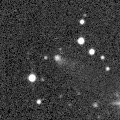
|
It brightened rapidly. Now it is 16.7 mag (Oct. 15, Ken-ichi Kadota). It is observable at 16.5 mag in good condition from autumn to winter.
Date(TT) R.A. (2000) Decl. Delta r Elong. m1 Best Time(A, h)
Dec. 10 22 58.96 -5 0.2 2.487 2.609 85 16.8 20:52 (113, 37)
Dec. 17 23 6.20 -3 55.1 2.569 2.601 80 16.8 20:57 (109, 31)
|
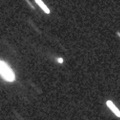
|
Now it is 16.9 mag (Nov. 25, Ken-ichi Kadota). It brightened rapidly, and became brighter than originally expected. It keeps 17 mag until 2017. In the Northern Hemisphere, it keeps observable in excellent condition for a long time. It is not observable in the Southern Hemisphere.
Date(TT) R.A. (2000) Decl. Delta r Elong. m1 Best Time(A, h)
Dec. 10 13 45.63 54 51.0 7.269 7.318 88 16.9 2:53 (219,-25)
Dec. 17 13 46.45 55 12.5 7.208 7.323 92 16.9 2:54 (217,-22)
|
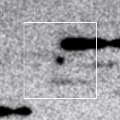
|
Now it is 16.7 mag (Nov. 3, iTelescope Observatory, Siding Spring). It keeps 16 mag for a long time from 2017 to 2018.
Date(TT) R.A. (2000) Decl. Delta r Elong. m1 Best Time(A, h)
Dec. 10 9 44.32 -11 40.1 5.599 5.917 104 17.0 2:53 (229, 58)
Dec. 17 9 41.32 -11 19.3 5.464 5.895 111 16.9 2:54 (216, 62)
|
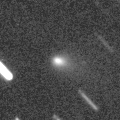
|
It had been lost for a long time over 200 years since its discovery in 1783. It brightened rapidly, and reached up to 13.9 mag in September (Spet. 1, Sandor Szabo). Now it is fading. It is observable in excellent condition for a while in the Northern Hemisphere. It is not observable after this in the Southern Hemisphere.
Date(TT) R.A. (2000) Decl. Delta r Elong. m1 Best Time(A, h)
Dec. 10 3 56.75 55 50.4 1.098 1.984 144 16.9 22:37 (180, -1)
Dec. 17 3 37.35 57 18.9 1.159 2.012 139 17.3 21:51 (180, -2)
|

|
Now it is 17.3 mag (Nov. 7, Mt. Lemmon Survey). It will be observable at 17 mag in good condition in winter.
Date(TT) R.A. (2000) Decl. Delta r Elong. m1 Best Time(A, h)
Dec. 10 12 10.91 -0 0.9 2.442 2.395 75 17.0 2:53 (252, 24)
Dec. 17 12 19.27 -0 33.0 2.381 2.423 80 17.0 2:54 (249, 28)
|
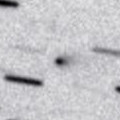
|
Now it is 17.4 mag (Nov. 25, Ken-ichi Kadota). In the Northern Hemisphere, it will be observable at 17 mag in excellent condition in winter. It locates low in the Southern Hemisphere.
Date(TT) R.A. (2000) Decl. Delta r Elong. m1 Best Time(A, h)
Dec. 10 7 16.05 34 18.4 2.510 3.398 149 17.1 2:01 (180, 21)
Dec. 17 7 12.58 34 34.4 2.476 3.402 156 17.1 1:30 (180, 20)
|
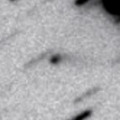
|
Now it is 17.9 mag (Nov. 2, Purple Mountain Observatory, XuYi Station). It was observed at 17 mag last winter. It will be observable at 17 mag again next winter. It is observable in good condition in the Northern Hemisphere. But it locates low in the Southern Hemisphere.
Date(TT) R.A. (2000) Decl. Delta r Elong. m1 Best Time(A, h)
Dec. 10 11 14.69 18 17.4 3.648 3.871 95 17.2 2:53 (228, 21)
Dec. 17 11 18.69 19 31.2 3.562 3.890 102 17.2 2:54 (222, 23)
|
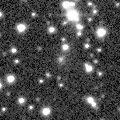
|
It will pass the perihelion in 2019. However, it has not been brightening since the discovery in 2010. Now it is 17.3 mag (Nov. 4, D. Buczynski). It keeps observable in excellent condition in the Northern Hemisphere. It is not observable in the Southern Hemisphere.
Date(TT) R.A. (2000) Decl. Delta r Elong. m1 Best Time(A, h)
Dec. 10 4 6.48 62 4.8 8.910 9.679 139 17.2 22:48 (180, -7)
Dec. 17 4 1.61 62 5.9 8.907 9.659 137 17.2 22:16 (180, -7)
|

|
It will brighten up to 10 mag in 2017 summer, and it will be observable in excellent condition in the Southern Hemisphere. It locates low in the Northern Hemisphere.
Date(TT) R.A. (2000) Decl. Delta r Elong. m1 Best Time(A, h)
Dec. 10 13 22.95 -0 58.5 2.727 2.373 58 17.5 2:53 (264, 10)
Dec. 17 13 34.68 -2 5.6 2.614 2.334 62 17.2 2:54 (263, 14)
|
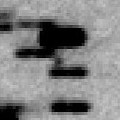
|
It will be observable at 17.5 mag in good condition from winter to spring.
Date(TT) R.A. (2000) Decl. Delta r Elong. m1 Best Time(A, h)
Dec. 10 13 23.23 -3 17.6 2.615 2.250 57 17.4 2:53 (266, 11)
Dec. 17 13 35.29 -4 24.8 2.551 2.257 61 17.4 2:54 (265, 15)
|
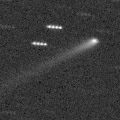
|
It brightened up to 15 mag from late 2014 to early 2016. Now it is fading slowly. Now it is 17.1 mag (Nov. 5, Y. Sugiyama). In the Northern Hemisphere, it keeps observable in good condition for a long time, although it will be low temporarily in winter. It is not observable after this in the Southern Hemisphere.
Date(TT) R.A. (2000) Decl. Delta r Elong. m1 Best Time(A, h)
Dec. 10 21 17.91 32 48.2 5.690 5.629 81 17.5 20:52 (126, -6)
Dec. 17 21 18.42 32 17.9 5.816 5.665 76 17.6 20:57 (122,-12)
|
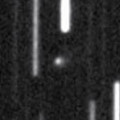
|
Now it is 17.3 mag (Nov. 9, L. Elenin). It keeps 17 mag for a long time from 2016 autumn to 2017 summer, and it keeps observable good condition all through that period in the Southern Hemisphere. In the Northern Hemisphere, it will never be observable again after this.
Date(TT) R.A. (2000) Decl. Delta r Elong. m1 Best Time(A, h)
Dec. 10 2 54.97 -64 0.0 2.389 2.573 89 17.5 21:35 ( 0, 61)
Dec. 17 2 34.78 -64 39.1 2.440 2.551 85 17.5 20:57 ( 2, 60)
|
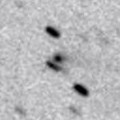
|
Now it is 17.0 mag (Nov. 10, Purple Mountain Observatory, XuYi Station). It keeps observable at 17.5 mag in good condition from autumn to winter.
Date(TT) R.A. (2000) Decl. Delta r Elong. m1 Best Time(A, h)
Dec. 10 3 9.35 15 5.6 2.163 3.061 150 17.7 21:51 (180, 40)
Dec. 17 3 6.85 14 50.2 2.214 3.059 143 17.7 21:21 (180, 40)
|
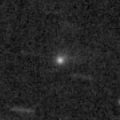
|
Now it is 17.0 mag (Nov. 2, Mitsunori Tsumura). It tends to be brightest after the perihelion passage. It is observable at 17.5 mag in good condition from autumn to winter.
Date(TT) R.A. (2000) Decl. Delta r Elong. m1 Best Time(A, h)
Dec. 10 2 5.67 -0 16.7 2.425 3.149 129 17.7 20:52 (178, 55)
Dec. 17 2 5.29 0 5.1 2.513 3.161 123 17.8 20:57 (164, 54)
|
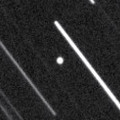
|
It brightened up to 14.9 mag in September (Sept. 29, Sandor Szabo). In the Northern Hemisphere, it keeps observable in excellent condition, but it will be fading after this. It keeps locating very low in the Southern Hemisphere.
Date(TT) R.A. (2000) Decl. Delta r Elong. m1 Best Time(A, h)
Dec. 10 23 23.26 22 21.7 1.381 1.852 101 17.7 20:52 (139, 20)
Dec. 17 23 32.36 21 10.4 1.521 1.906 96 17.9 20:57 (134, 18)
|
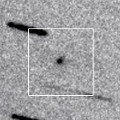
|
Now it is 17.5 mag (Oct. 24, D. Buczynski). It will brighten up to 16 mag in 2017 summer, but it is not observable around the high light. It is observable at 17-18 mag until March in the Southern Hemisphere, or until April in the Northern Hemisphere.
Date(TT) R.A. (2000) Decl. Delta r Elong. m1 Best Time(A, h)
Dec. 10 2 3.15 1 5.8 2.042 2.780 130 17.8 20:52 (177, 54)
Dec. 17 2 1.17 1 22.2 2.083 2.744 122 17.8 20:57 (163, 52)
|
|
![]()
 56P/Slaughter-Burnham
56P/Slaughter-Burnham 74P/Smirnova-Chernykh
74P/Smirnova-Chernykh 65P/Gunn
65P/Gunn C/2014 B1 ( Schwartz )
C/2014 B1 ( Schwartz ) 53P/Van Biesbroeck
53P/Van Biesbroeck C/2015 V1 ( PanSTARRS )
C/2015 V1 ( PanSTARRS ) C/2016 R3 ( Borisov )
C/2016 R3 ( Borisov ) C/2013 V4 ( Catalina )
C/2013 V4 ( Catalina ) 188P/LINEAR-Mueller
188P/LINEAR-Mueller C/2014 R3 ( PanSTARRS )
C/2014 R3 ( PanSTARRS ) C/2016 A1 ( PanSTARRS )
C/2016 A1 ( PanSTARRS ) 226P/Pigott-LINEAR-Kowalski
226P/Pigott-LINEAR-Kowalski 118P/Shoemaker-Levy 4
118P/Shoemaker-Levy 4 P/2015 TP200 ( LINEAR )
P/2015 TP200 ( LINEAR ) C/2015 X7 ( ATLAS )
C/2015 X7 ( ATLAS ) C/2010 U3 ( Boattini )
C/2010 U3 ( Boattini ) 71P/Clark
71P/Clark 94P/Russell 4
94P/Russell 4 C/2014 A4 ( SONEAR )
C/2014 A4 ( SONEAR ) P/2016 S1 ( PanSTARRS )
P/2016 S1 ( PanSTARRS ) 128P/Shoemaker-Holt 1
128P/Shoemaker-Holt 1 136P/Mueller 3
136P/Mueller 3 (3200) Phaethon
(3200) Phaethon 30P/Reinmuth 1
30P/Reinmuth 1![]()











































